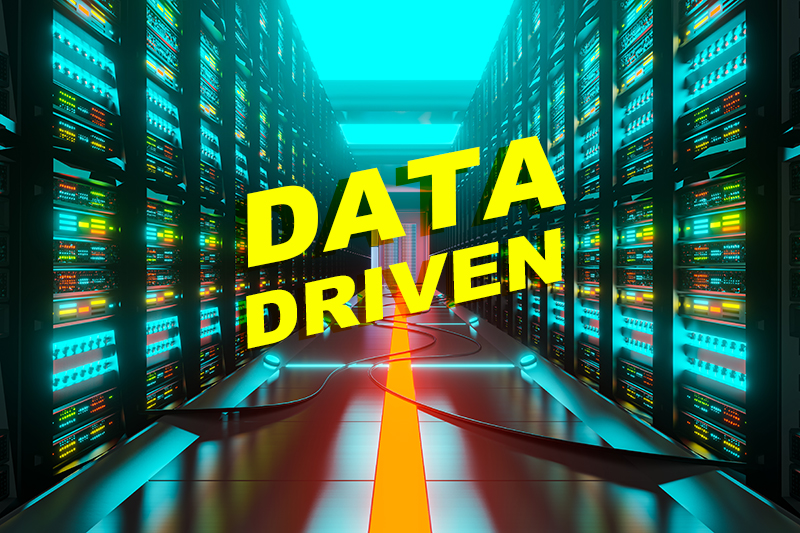Over the years, firms have amassed huge quantities of data and invested in data conversion services, and analytics to improve strategy, provide more effective and efficient services, identify and respond to changing trends, and streamline operations. However, experts say that to make the most of the information, firms need to have a strong “data-driven culture”.
What exactly is a data-driven culture? When a company implements a “data-driven” approach, it means that it uses data analysis and interpretation to makes strategic decisions at every level based on facts, and not instinct or intuition.
Let’s take a look into 7 key factors that go into developing a data-driven culture.
- Develop a data-driven mindset: It is necessary that both top managers and employees have a data-driven mindset. A Harvard Business Review article notes that companies with strong data-driven cultures usually have top managers who make it clear that key decisions must be based on data. This mindset will propagate downwards and people will understand the importance of working with data and developing objectives and proposals based on trackable and measurable facts, instead of conjecture. In addition to a data-driven leadership, companies should have a solid data governance structure and ensure that employees have access to data to implement the decisions they are responsible for.
- Integratedata analytics into business processes: Data science must be an integral part of the business. For example, take an insurance company managing payments to prevent fraud. Analytics will focus on assessing customer behavior, payment history, location, and other related data. The results will initiate various business processes – to make the payment, trigger the risk management process or deny the payment request. In each case, analytics is used to make the decision that impacts the business process flow. Even with simple and usable models, organizations will need to ramp up their literacy and analytical skills. Hiring employees who are code-literate and fluent in quantitative concepts can support proper application of analytics in business processes.
- Ensure employees know which metrics to use: To develop a data-driven culture, companies need to empower their teams. Employees must know how to derive insights from data and make decisions based on it. To use data effectively, they need to understand which business metrics or key performance indicators (KPIs) they are responsible for and how to use them. The business metrics an organization chooses to use actually depends on its unique goals. For example, project management performance metrics are used to track project performance. Tracking project management metrics are key to improving project management and delivery.
- Consider analytical alternatives: There are various approaches to analyze a problem. To arrive at the best approach to solve a specific problem, HBR suggests that it would be a good idea to ask teams how they addressed a problem, what alternatives were considered, what they understood the compromises to be, and why they chose one strategy over another. This exercise will help teams better understand various approaches and encourage them to consider a wider set of alternatives or to rethink important assumptions. Tweaking a model could result in significant improvements in the way a problem is solved.
-
- Monitor data quality at source/input: It’s not enough to just collect data. It’s important to ensure the quality of data at the source or input stage for a data-driven culture to take root and thrive. Poor-quality, poorly-organized data can affect analytics. Utilizing professional data cleansing services are a great option to manage the resource-intensive task.
Outsourcing data entry and cleansing will ensure that data professionals’ time is devoted to deriving and generating valuable insights rather than fixing data quality and data-access issues.
- Use open data: Focusing only on data collected within the company is a common mistake. Open data is the best source of publicly accessible information available to businesses today. Data from internal sources such as CRM and ERP systems, databases, marketing automation tools and other sources is important, However, to implement a data-driven approach, a company does not have to generate large amounts of data from these sources. External data sources can provide excellent value. And can be used for predictive intelligence and forecasting, understanding buying behavior of population groups, and more. Examples of open data sources include government agency reports, marketing and social media data such as Google Trends and social mention, business directory data, and academic data. As a Forbes article points out, “If this information is ignored, there is a possibility that decision-making will be divorced from the real world, and the data-driven approach will not work”
- Use analytics to enhance the employee experience: Data analytics can be used to help teams work smarter. Learning new skills to better handle data in itself may not excite people. But if data fluency benefits them by saving time, helping avoid rework, or generating frequently-needed information, it will enhance the employee experience. HBR reports how the analytics team at a leading insurer trained itself on cloud computing to experiment with new models. This eventually allowed the team to easily utilize the company’s newly implemented technical infrastructure to demonstrate a working solution – without formal IT support.
Finally, implementing a data-driven approach would not be possible without the right support. Existing IT structures may stand in the way of new methods of data sourcing, storage, and analysis. Managing unstructured data is often beyond legacy IT capabilities. Getting the necessary IT and outsourcing solutions support can go a long way in identifying the most important data for use in analytics and improving its quality by identifying missing information, synchronizing and merging overlapping data, and cleansing it for use in data analytics.




